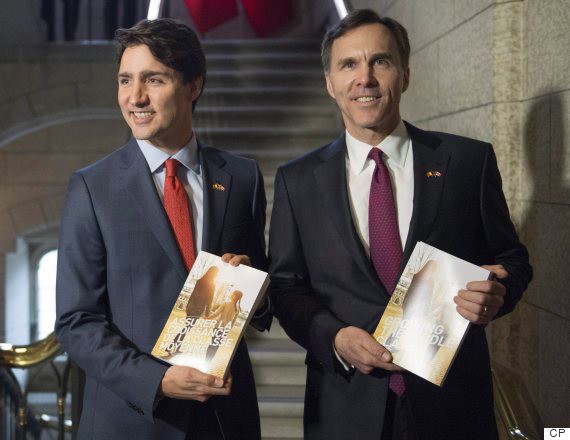March 9, 2018
How the Feminist budget also benefits men – Cardozo
By Andrew Cardozo

Opinion
MONDAY, MARCH 5, 2018 | THE HILL TIMES
Andrew Cardozo New Communications
A budget about women and how it benefits men
So a feminist budget is about women and may appeal politically more to women and girls, but make no mistake, men and boys benefi t too
OTTAWA—The federal budget released by Finance Minister Bill Morneau tabled last week has been billed as a feminist budget or a budget put through a gender analysis or lens. But what does that mean?
As the bumper sticker says, “feminism is the radical idea that men and women are equal.” So the issues that the budget addresses include education and skills, especially getting more girls and women into science, technology, engineering, and math—STEM. It also focuses on economic participation in jobs and the fact that, on average, women earn 69 cents compared to that earned by men. It focuses on gender-based violence, poverty faced more by women than men and addressing issues of health and well-being. Pharmacare is a big one. Men and women use prescription drugs in different ways, and men have more access to workplace benefi t plans than women, as more women work part time and in lower paid industries that don’t have employee benefi ts and health care plans. What are the basics of a feminist policy? And here is what some of the ministers are saying: Environment Minister Catherine McKenna said, “when women do better, everyone does better.” Small Business and Tourism Minister Bardish Chagger said, “it’s about people, all people. So what does this mean?
One of the key issues is that women, on average, make 69 per cent on the dollar compared to what men make, even on similar jobs; on average— there are lots of exceptions of course. These are huge justice and fairness issues but a budget focuses more on the economic loss. This affects everyone, namely those specifi c female workers fi rst, and their ability to spend on themselves, and in so doing put money into the economy. Those women have 31 cents per dollar less than men to spend on restaurants, groceries, computers, and clothes.
This also affects everyone else who depends on their income in some way. A two parent family—man and woman—means that family has 31 cents per dollar less coming in, and the family— husband, sons and daughters included—have that much less to spend on things the family needs. In two-women led households, they essentially have 62 cents less
for every two dollars. In single-parent women-led households, the mothers and their sons and daughters are all affected. The majority of singleparent families are women-led and it’s safe to assume that half those kids are boys. For all those of the male variety who feel a feminist agenda does not concern them, think again. Expanding pay equity beyond the federal government and applying it to federally regulated companies, like airlines and phone companies, expands equal pay for equal work. Some of the other issues the government has addressed elsewhere include participation of women across the board, especially at senior levels in the private and public sectors. A genderbased analysis covers the family, because women by and large are the parent most central to the well-being of the family, and the ones who manage the family budget. So the Canada Child Benefi t of the Liberal government’s fi rst budget is relevant as is the increase in child and family services for Indigenous peoples, including the spending on Indigenous housing and water. This spending is long overdue having been ordered by
the Human Rights Tribunal and the Federal Court. Other measures the government had implemented were really not enough, but now kids on reserve should be getting the same amount of social service support than all other Canadian kids. And perhaps that is not enough, because the needs on reserve are greater. Measures to counter genderbased violence are important too. Whether in response to workplace harassment and assault or the wide range of other violence faced by women, we have a long way to go before some men stop seeing preying on women to be a perk of the jobs or their way to just have fun or worse act out on their need to dominate and intimidate. Much will be legitimately said and written about the politics of a feminist budget and its relevance to the NDP. Some will see this as a Jagmeet Singh budget as it speaks to issues that he has been clearly addressing, which would suggest he is a very important addition to the national body politic. Although to be fair to the Liberals none of these are issues the Liberals have not promised in the past. Who cares about all this? If none of the above appeals to men, think about your daughters, your wives or partners, your mothers, your women friends. It’s about all of them. Why should they earn less or live in greater danger? So a feminist budget is about women and may appeal politically more to women and girls, but make no mistake, men and boys benefi t too. Andrew Cardozo is president of the Pearson Centre and an adjunct professor at Carleton University. The Hill Times



